It was 6am on a chilly Wednesday morning. Most people are still asleep in their beds at this hour, but in the parking lot of Meals on Wheels’ San Francisco headquarters in Bayview, the day had already begun. We came to tell the story of one of their main programs, a weekly sendoff of home-delivered groceries to participants across the city. Not only did we learn a lot about Meals on Wheels and the incredible work they do in San Francisco, but we also came away with an understanding of how the supply chain challenges that affected the Food Bank also impacted our partners.
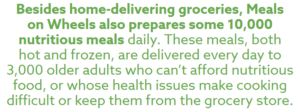
As the black of morning slowly lightened to gray, about a dozen volunteers trickled in and gathered around a table to grab coffee and donuts before their shift. A Food Bank refrigerated truck slowly backed into the parking lot, and with a little direction from a woman in a Meals on Wheels fleece, the volunteers started dragging a few tables out of the warehouse and into the parking lot to form two assembly lines. Soon, pallets of carrots, onions, asparagus, and rice made their way to the assembly lines.
The last pallet unloaded off the truck had a surprise delivery of frozen high-grade fish. When we approached the woman directing the volunteers, she introduced herself as Stephanie Galinson, Volunteer Programs Manager at Meals on Wheels SF. “We pretty much know there’s going to be onions, apples, and carrots all winter long and we’re used to that,” she told me. But in the last two years, there’s been a lot of changes to what type of food we receive for our clients. “At the beginning of COVID, I guess the Food Bank had a sudden spurt of donations from restaurants that had to close down. So, we received some crazy wonderful stuff – the Food Bank called us one day and said, ‘Guess what you’re getting? Wagyu steaks.’ We said, ‘You’re joking, right?’ That Wednesday we carefully bagged up the gourmet steaks,” she laughed.
Ch-Ch-Ch-Ch-Changes for Home Delivered-Groceries and More
The pandemic threw Food Banking into chaos as we scrambled to find innovative solutions to unusual problems. But nearly two years in, we’re able to get enough context on how COVID impacts programs like home-delivered groceries that we can make some generalizations about how our work will be affected in the short-term future. The same goes for our partners like Meals on Wheels, who are starting to expect the unexpected. “We get unusual stuff – we’re getting more non-animal proteins, which is great. For example, we’ll get plant-based tuna substitute, or a lentil and rice package meal. We even had Impossible Burgers a couple weeks ago. The volunteers are excited about the increased variety, and it’s always interesting to get feedback from clients and learn whether they enjoy the new items. Some folks are excited to see something that’s not chicken or eggs, because it’s something different.”
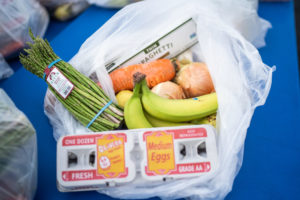 Partners like Meals on Wheels, as well as our own food pantries, have seen such a change in the type of food they distribute for a few reasons. During the early days of COVID-19, we saw a spike in the number and type of donations we received. Our community has been incredibly generous during these hard times, whether it be through monetary donations that let us turn $1 into two meals or through the giving of food. In the first few months of the pandemic, we even saw some donated caviar pass through our warehouse on its way to participants.
Partners like Meals on Wheels, as well as our own food pantries, have seen such a change in the type of food they distribute for a few reasons. During the early days of COVID-19, we saw a spike in the number and type of donations we received. Our community has been incredibly generous during these hard times, whether it be through monetary donations that let us turn $1 into two meals or through the giving of food. In the first few months of the pandemic, we even saw some donated caviar pass through our warehouse on its way to participants.
But as the months of COVID have turned to years, we’re starting to see the effects of long-term disruption to industry, especially the global supply chain. “We’ve worked hard to overcome the barriers caused by supply chain challenges to meet the increased need for food assistance since the pandemic, but it puts tremendous strain on our financial resources,” Barbara Abbott, our Food Bank’s Vice President of Supply Chain, told me. Writ large, this means that we have to pay a lot more money for the food our neighbors need.
Not only are the Food Bank and our participants spending more money on food, but much of the available product is being bought out first by retailers. We’ve had to buy food from unusual places to replace what we lost due to cancelled or delayed shipments, like the frozen fish and Impossible Meat that partners like Meals on Wheels receive from us instead of the more typical seasonal food. The same goes for fruits and vegetables. Stephanie at Meals on Wheels, as well as many other partners, are seeing less-common produce like asparagus and pears replace the now harder-to-find regulars of onions, apples, carrots, and more for their home-delivered groceries.
The more things change, the more they stay the same
Just as we’ve had to change the way we work at the Food Bank, Meals on Wheels had to transform their program to adjust to the realities of COVID-19. But the impact our food pantry programs have on the community is still as important as ever.
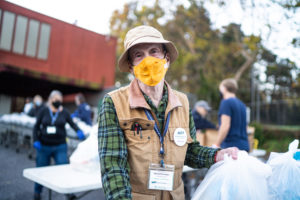
“I have a fixed route in the Tenderloin,” a volunteer Meals on Wheels driver named Michael told us while loading packed grocery bags into his car. “I bring the groceries to my clients, and we look forward to seeing each other. It’s much more than just the food delivery – it’s talking with my clients, and respecting them, and empathizing with them.”
It takes a community to meet the challenges posed by food insecurity, COVID-19, and supply chain uncertainty. The Food Bank is committed to supporting Meals on Wheels and other partners by supplying fresh, nutritious food for home-delivered groceries, and volunteers like Michael are with us every step of the way. “My clients can always depend on me on a Wednesday morning, to come with a bag of groceries and a good word,” he said.


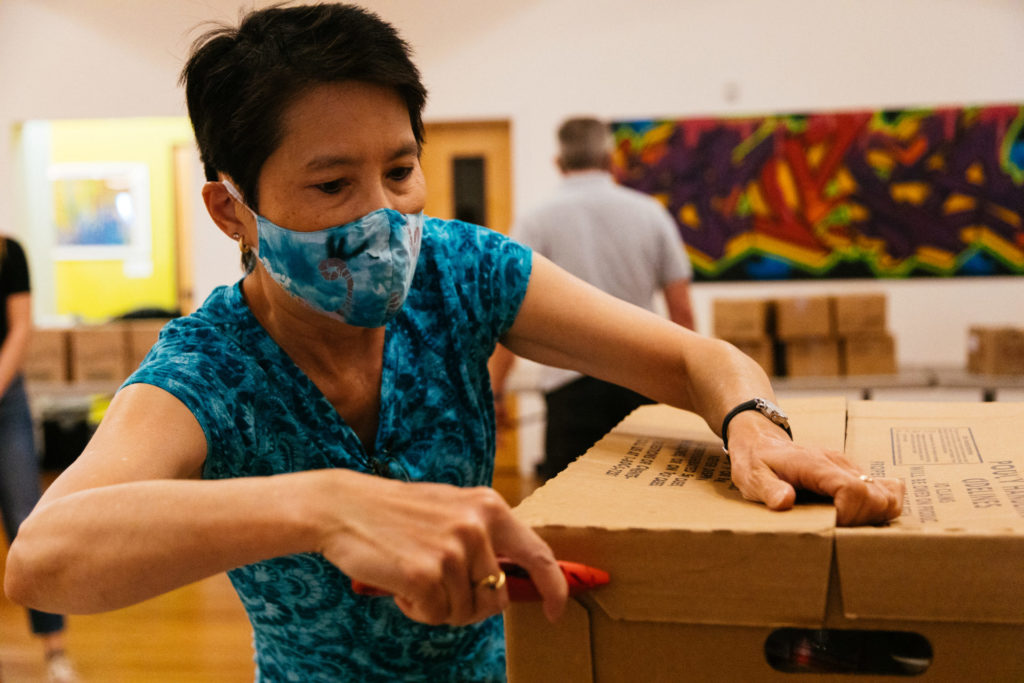
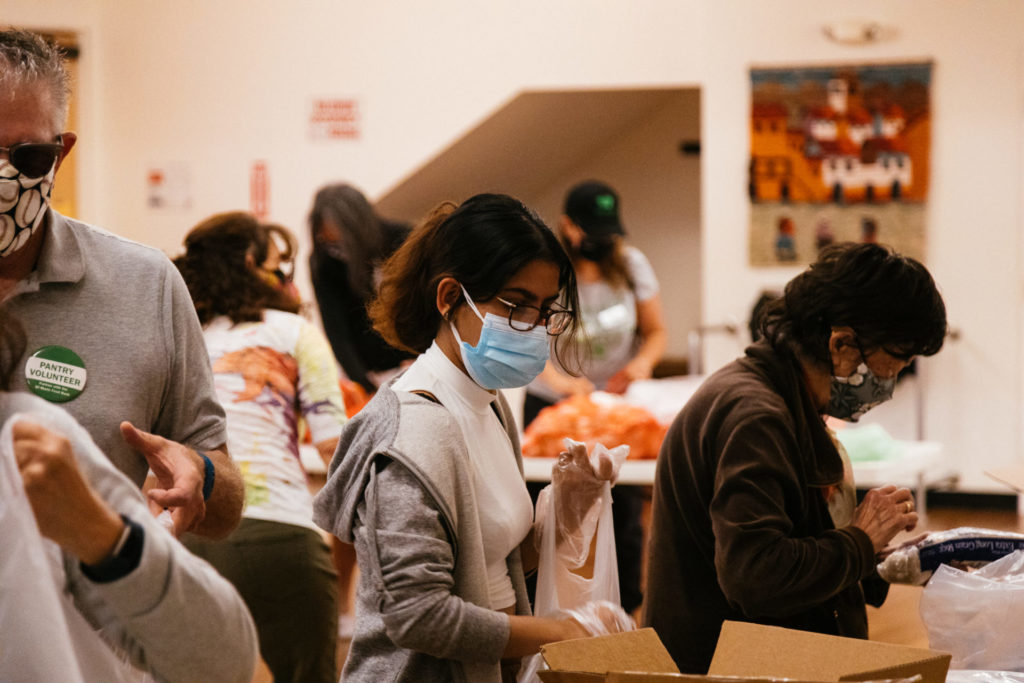
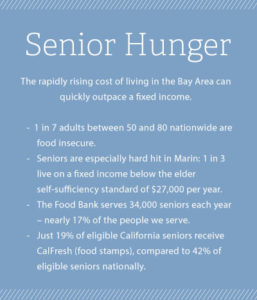 We first met Phillis (89) and Lee (81) in a line of cars waiting for groceries at the San Geronimo Valley Community Center’s
We first met Phillis (89) and Lee (81) in a line of cars waiting for groceries at the San Geronimo Valley Community Center’s 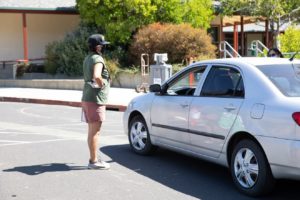


Share